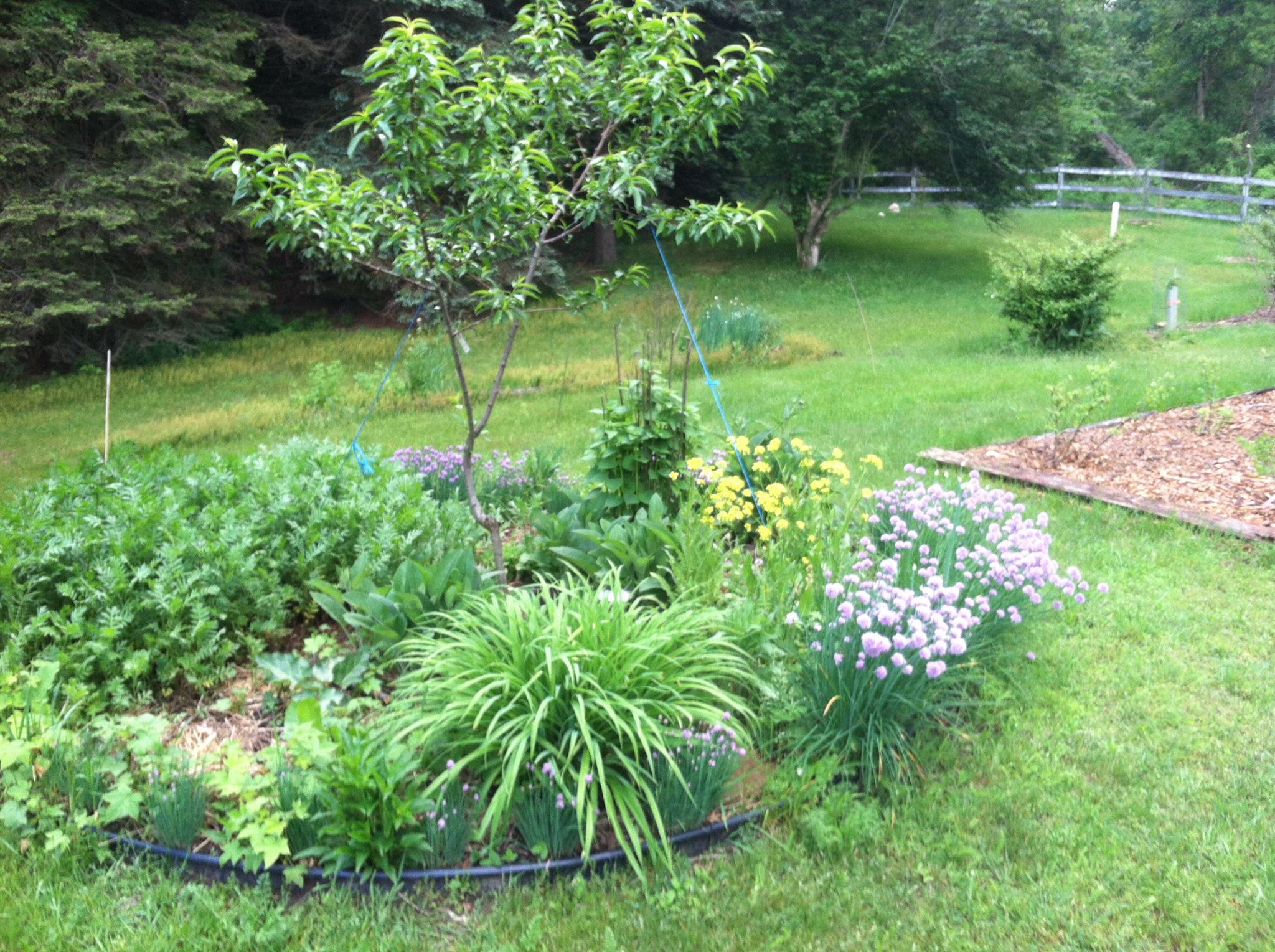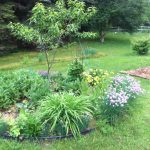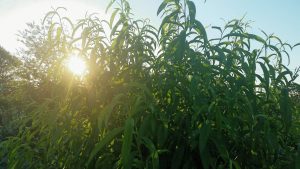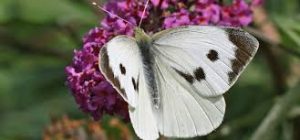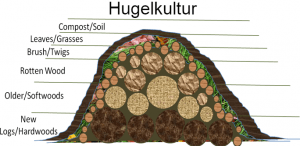Guilds are a fundamental technique in permaculture design. A guild is typically set around a main central tree (often a fruit or nut tree) and plants are grown around the base of the tree that all work together as a support network. Each plant species in the grouping performs one or more functions that benefit others in the vicinity, as well as interacting with animal species and soil microorganisms to create a healthy and mutually beneficial ecosystem.
Now let us look at the different components of a guild and what each of their roles are in a permaculture garden.
Main element
The main element in your guild is the central tree. This is often a fruit tree, although the main element could be any plant of value to the gardener – a blueberry bush, a nut tree, even a tree to provide firewood. When choosing the rest of the plants in the guild the needs of this central tree should be the primary focus.
Nitrogen fixers
The nitrogen fixers (mostly plants from the legume family – peas, beans, etc) create a symbiotic relationship with a bacteria in the soil (called Rhizobia) which allows them to use nitrogen from the air rather than draw it from the soil. When the plant dies, the fixed nitrogen is released, making it available to other plants and this helps to fertilize the soil. A word of caution here, legumes do not fix nitrogen unless the compatible Rhizobia bacteria is present in the soil. If the bacteria is not available then the plant will draw nitrogen from your soil the same as any other plant in your garden might. You can buy inoculants to ensure the bacteria is present.
Accumulators
The other plants to be included in the guild for the job they do in providing nutrients to your garden are dynamic accumulators. These are plants which have an extremely deep tap root and draw nutrients from deep in the subsoil where many plants cannot access it. They bring these nutrients to the surface where (upon cutting down the foliage) these nutrients are returned to the topsoil for use by the rest of the plants. Dynamic accumulators are one of your “garden fertilizers”. The deep tap roots of these plants also help break open hardened soil, making it softer, and allowing for air and water to be easily absorbed into the earth.
Suppressors
The suppressors are used to keep undesirable plants out – in the majority of cases this would be grass. Grass will compete with the main tree and surrounding plants for water and nutrients, so keeping it at bay is essential for robust growth. Bulbs or dense clumping plants are great for this. A circle of bulbs should be planted around the guild. Either at the drip line of the main tree or further in towards the tree trunk. Plants from the Allium (onion) family work well here.
Attractors
The attractors are plants which attract beneficial insects to the guild. Attracting a variety of insects to the guild is beneficial for two reasons. Firstly, it helps to pollinate the plants (and so, in the case of the main tree, produce fruit/nuts etc), while secondly it prevents any one species of insect becoming a problem, as different species predate on one another. Plants from the Apiaceae (parsley/carrot) family are very good at attracting beneficial insects.
Repellers
To protect the plants in our guild from destructive bugs we can either attract the predatory insects (and birds, lizards, frogs, etc) to our garden, or we can use plants to repel or confuse the destructive insects. The strong scented plants from the Allium (onion) family are an example of good pest repellers.
Mulchers
Adding plants that naturally provide mulch to the guild will save the gardener time and energy. Utilizing species that you can slash the foliage and leave on the ground to rot into the topsoil means the soil retains good structure, helping aeration and water percolation, and provides nutrients that all the plants in the guild can access. Plants such as comfrey are a good example. Mulchers can also be in the form of ground cover plants which protect the soil by providing a “living mulch” and help suppress weeds.
Every plant chosen for the guild should provide several beneficial functions (ie have multiple uses). For example, an apple tree can provide apples for family and friends, provide shade in summer, attract birds to the garden, provide screening from the neighbours, provide somewhere to build the kids’ cubby house, etc. Comfrey (a dynamic accumulator) will fertilize the rest of the guild, break up the hard subsoils, used medicinally for treating skin irritations and wounds, attracting the Blue Banded bee (known as a “buzz pollinator” and beneficial for pollinating members of the Solanaceae family).
Remember too that you would not necessarily only have ONE type of plant from each of the groups above (except for perhaps the main central tree – but even that might not be so if you are practicing “backyard orchard culture” or close planting techniques). Diversity is the key to a healthy garden and your guild is no exception. Put in multiple plants from each category within your guild and your garden will flourish.
Now run outside and create your oasis!
Jo

